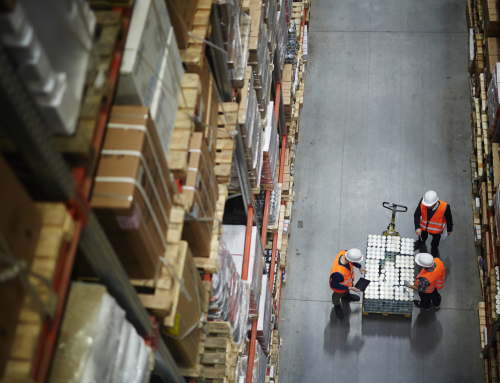An ecosystem of partners can help you step out of the Amazon shadow and instantly
scale your distribution footprint.
Few words are
used more to describe the current business environment than “rapidly changing.”
But what does it really mean? Those of you who have decided to take control of
your brand and compete with Amazon have an idea of what we are talking about.
Until just a
few years ago, Amazon reigned supreme among small and medium-sized businesses vying
for the attention of online consumers. Compared to the limited options
available at the time, the distribution network of the e-commerce heavyweight
was hard to match.
Then, as startups
responded to a need in the marketplace for
alternative distribution models, things began to change, and — yes — the change
has indeed been incredibly rapid. Now, retailers and brands of all sizes have a
growing ecosystem of startups and services at their fingertips, allowing them
to step out of the Amazon shadow.
Let’s take a
look at the factors at play.
Why are companies leaving Amazon?
Amazon
has, without a doubt, raised the bar for speedy fulfillment and distribution. While
some companies are perfectly satisfied with Fulfillment by Amazon (FBA), others
have left altogether or begun to explore other options for their product lines.
An entrepreneur who — in an attempt
to boost sales for his company’s specialty shaving products — initially turned to Amazon, recently told The Wall
Street Journal:
“If
you’re trying to build something, a brand, a relationship [with customers],
Amazon’s not a good place. Before I took it off Amazon, they started
advertising their Amazon razors on my page.”
The lack of brand control and inability to interact directly with customers are two of the most common complaints that have spawned startups to step up and fill the gap. Sellers have also packed up in the face of rising fees that they say cut into profits, eliminating the primary incentive for being there. A feeling of being at the mercy of the e-commerce giant has caused some to seek partnerships that offer more hands-on, tailored services.
What do consumers want?
So, if you decide to forego FBA and compete
with Amazon, what is the key to meeting the expectations of your target
audience? The question is important since the stats on consumer preferences do
not necessarily line up with the priorities of many companies. While the focus
tends to be on speeding up deliveries — a potentially pricey undertaking for any
business —
consumers are actually relatively patient — as long as they don’t have to
pay for shipping.
Bear
the following numbers in mind:
- 88% of consumers prefer free shipping over fast shipping, according to Deloitte.
- 4.5 days. That’s the average length consumers are willing to wait in return for not having to pay, a survey from AlixPartners found.
- 96% of the survey respondents said that the availability of free shipping impacts their purchase decision, while 73% said that it has a great impact on their decision.
But
it’s not only the speed and price of shipping that matter to today’s consumers.
They have also grown increasingly accustomed to being able to customize their
orders, whether it means buy-online-pick-up-in-store or specifying design
features.
Although as many as 87% of consumers start their shopping journey online, 46% complete the purchase in-store, underscoring the need for retailers to provide a connected, omni-channel shopping experience. Retailers also know that a personal touch at the point of delivery — a hand-written note, for instance —builds brand loyalty and helps set them apart from the pack.
How can you compete with Amazon?
Few
businesses have a nationwide distribution network of owned-and-operated
facilities. Your business is more likely to have a couple of fulfillment
centers, making any goal of fast and free shipping nearly impossible to meet. That’s
when the new ecosystem of startups and services enters the picture. At the
center of this network of partners, you find on-demand
warehousing.
Adopting an on-demand warehouse model means that you — in a matter of days — can find space and services for your products in areas where demand is high. Rather than a static supply chain, it gives you the flexibility to add and remove warehousing and fulfillment nodes based on the ebb and flow of business. Suddenly, you can scale fulfillment on an on-demand basis, paying only for what you need, when you need it. Perhaps most importantly, strategically positioning inventory closer to your customers cuts last-mile delivery costs and shortens delivery times.
On-demand
warehousing also puts you in charge of your brand. Warehowz’s on-demand
warehousing platform, for instance, gives you full visibility into every
stage of the product journey, from fulfillment to delivery.
Have questions? We are here to help. Our team of seasoned industry pros can help walk you through every step of adding on-demand warehousing to your portfolio of solutions (it’s easy).
Read more:
Estes partnership paves way for client access to cross-docking facilities
3 product companies, 3 ways to unlock supply chain flexibility
‘Should I lease a warehouse?’ The answers to your most common warehousing questions



